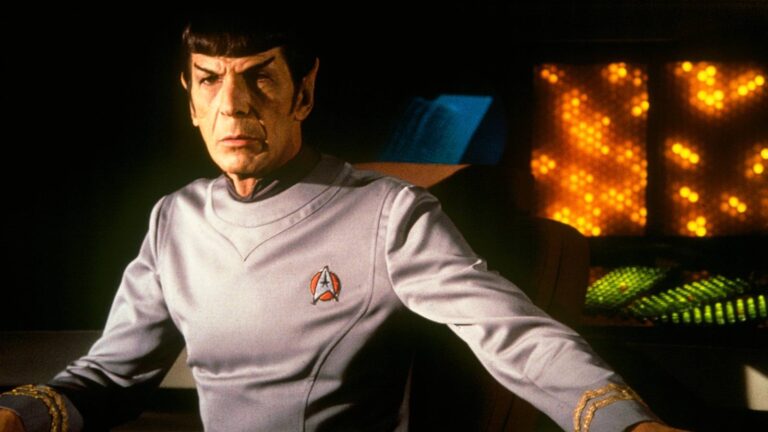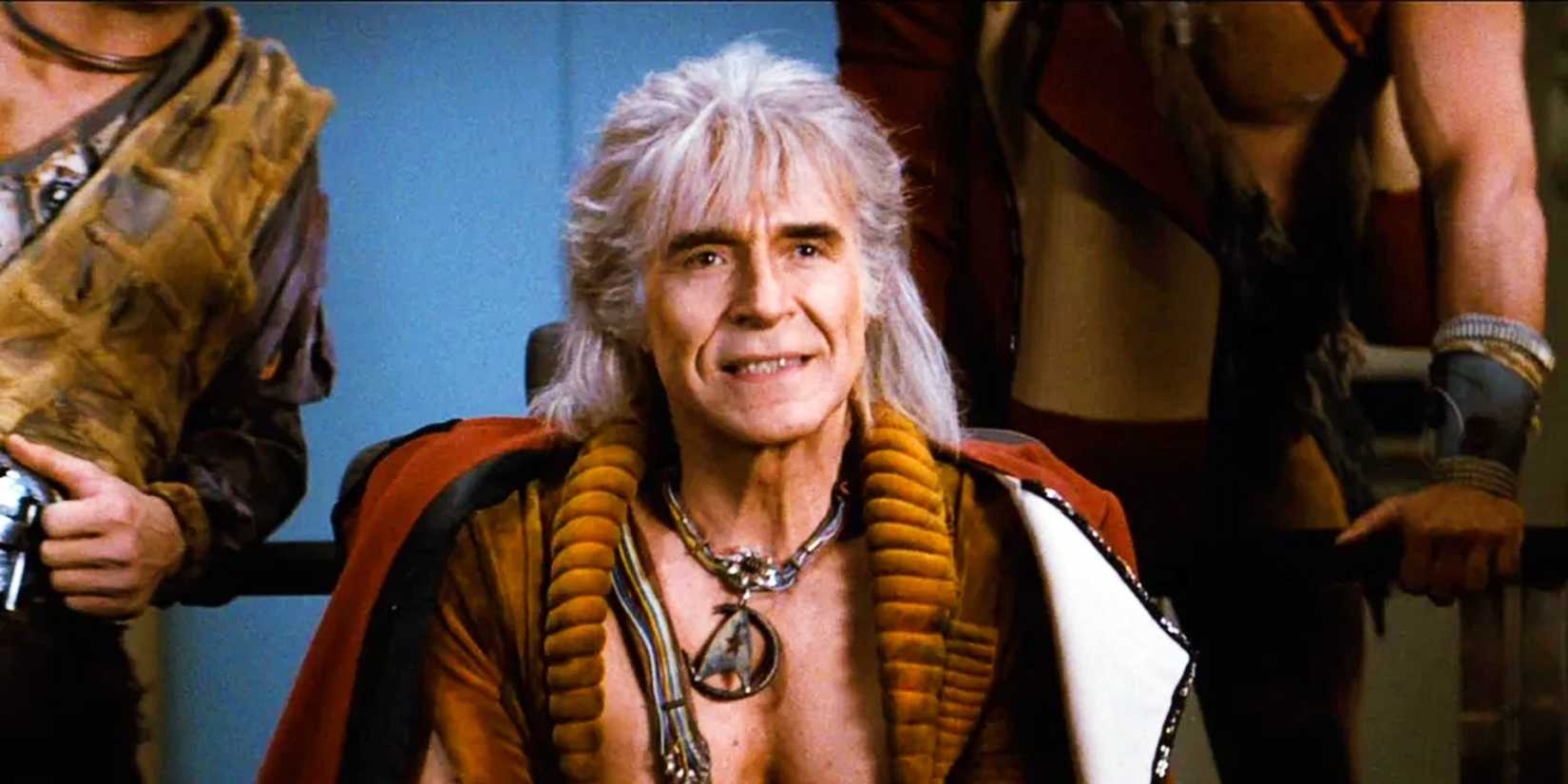Star Trek revolutionized TV when it arrived within the late Nineteen Sixties, however the motion pictures took the unsuitable lesson from the present’s finest episode. Although it might appear considerably quaint and tame at this time, it is not possible to overstate how groundbreaking The Authentic Sequence was when it hit screens. Gene Roddenberry’s imaginative and prescient featured an idealized future that was nothing like the current day.
Aboard the USS Enterprise, women and men have been equal, racism had been abolished, and humanity explored the celebrities with an eye fixed for journey and discovery, not conquest. This radical framework lent itself to glorious storytelling, particularly when the morals of the Starfleet crew got here up in opposition to numerous alien lifeforms that did not share their view.
Many classic Star Trek episodes subverted tropes, and informed advanced ethical tales that challenged the viewer’s perceptions of proper and unsuitable. One explicit episode had a significant affect on stars like William Shatner and Leonard Nimoy, and it is a shining instance of Star Trek‘s profound philosophy. Sadly, these classes did not translate to the large display.
Star Trek: The Authentic Sequence’ “The Satan In The Darkish” Had A Distinctive Villain
Coming towards the tip of the show’s first season, “The Devin within the Darkish” is a vital Star Trek episode that helped set up a part of the present’s morality. Kirk, Spock, and McCoy go to a mining planet that has been suffering from mysterious deaths. They ultimately encounter a creature often called the Horta, however that is the place the episode is totally different.
Spock thoughts melds with the creature, solely to find that it’s a sentient being that was defending its eggs. As a substitute of a violent battle, Kirk and Spock dealer a peaceable answer to the battle, and all events work collectively to their mutual profit. The Horta is a novel villain as a result of it is not really a villain in any respect.
Such concepts weren’t widespread on TV on the time, and it went in opposition to the shoot first mentality seen in most tales. William Shatner listed the episode as his favorite of the unique collection, and Leonard Nimoy shared an identical sentiment. It confirmed that humanity might overcome its innate worry of the unknown, one thing integral to the Enterprise‘s mission.
Star Trek: The Movement Image Borrowed The Similar Concept As “The Satan In The Darkish”
Star Trek‘s grand arrival on the large display was considerably hit-and-miss, and Star Trek: The Movement Image is not normally ranked extremely amongst the entire film franchise. Nevertheless, it was definitely dedicated to the concepts of The Authentic Sequence, and even borrowed a number of the ideas from “The Satan within the Darkish” when crafting its personal villain.
Star Trek: The Movement Image was nominated for 3 Academy Awards.
V’Ger is the driving drive of the film, and the mysterious entity wreaks havoc because it strikes towards Earth. By way of an identical collection of occasions because the aforementioned episode, the crew learns that V’Ger will not be really evil, solely misunderstood. There’s a measure of sympathy for the misplaced probe because it strikes out looking for its creator.
The Horta and V’Ger share a number of qualities, however it is the message behind the 2 “villains” that binds them. Each are the results of humanity’s short-sighted view, and might be seen as a consequence of that lack of forethought. The miners have been so centered on their mission that they ignored the Horta, whereas V’Ger’s creator by no means thought of the results of curiosity.
A Much less Villainous Antagonist Did not Work For Star Trek: The Movement Image
It could be unsuitable to say that V’Ger was the one factor that tanked Star Trek: The Movement Image, although the shortage of a compelling villain definitely did not assist. V’Ger was an excellent antagonist in concept, particularly because the villain of an episode of the present. Nevertheless, the Star Trek motion pictures wanted one thing a bit extra grand.
It is not simply that V’Ger’s story lacks sufficient depth to fill a whole feature-length film, but additionally that it does not really feel important sufficient to justify a movie. Followers received to see the Enterprise crew go on dozens of missions on the present, however their first look on the large display wanted to be bigger than something seen within the collection.
A part of that’s giving the Enterprise crew one thing to struggle in opposition to, although it did not should betray the morality on the coronary heart of the franchise. The Horta is a fair higher villain than V’Ger as a result of the lesson behind its existence is so much much less obscure. V’Ger is a sympathetic villain, however the takeaway behind it’s far too obscure.
Most Future Star Trek Villains Have been Very Completely different To V’Ger
Fortunately, the Star Trek film franchise was allowed to proceed after the failure of The Movement Image, however it got here with lots of modifications. Not solely did your complete visible language of Star Trek change with the discharge of The Wrath of Khan, however the strategy to storytelling was additionally altered to make the flicks really feel far more cinematic.
Star Trek II: The Wrath of Khan put its villain entrance and heart, and really made him a drive for evil. He’s extremely motivated, and keen to cease at nothing to actual his revenge. Like all nice villains, Khan is satisfied that he’s completely justified, which makes him a lot extra harmful.
Nevertheless, he’s much like V’Ger in that he does not betray any of the central ideas behind Star Trek‘s philosophy. Each Star Trek film villain after Khan adopted in his footsteps, although they weren’t all pretty much as good. Khan and V’Ger have been each impressed by basic episodes, however solely the previous took the proper classes.

- Created by
-
Gene Roddenberry
- First Episode Air Date
-
September 8, 1966
- Forged
-
William Shatner, Leonard Nimoy, George Takei, Nichelle Nichols, Deforest Kelley, James Doohan, Walter Koenig, Jonathan Frakes, Patrick Stewart, Michael Dorn, Marina Sirtis, Gates McFadden, Brent Spiner, LeVar Burton, Wil Wheaton, Avery Brooks, Nana Customer, Rene Auberjonois, Alexander Siddig, Cirroc Lofton, Armin Shimerman, Colm Meaney, Terry Farrell, Kate Mulgrew, Robert Beltran, Roxann Dawson, Jeri Ryan, Robert Duncan McNeill, Robert Picardo, Ethan Phillips, Garrett Wang, Jolene Blalock, Connor Trinneer, Dominic Keating, Scott Bakula, Linda Park, John Billingsley, Anthony Montgomery, Chris Pine, Zachary Quinto, Simon Pegg, Zoe Saldana, Karl Urban, John Cho, Chris Hemsworth, Benedict Cumberbatch, Anton Yelchin, Idris Elba, Sonequa Martin-Green, Mary Wiseman, Doug Jones, Anthony Rapp, Wilson Cruz, Oyin Oladejo, Emily Coutts, Jess Bush, Christina Chong, Anson Mount, Ethan Peck, Rebecca Romijn, Michelle Yeoh
- TV Present(s)
-
Star Trek: The Original Series, Star Trek: The Animated Series, Star Trek: The Next Generation, Star Trek: Deep Space Nine, Star Trek: Voyager, Star Trek: Enterprise, Star Trek: Discovery, Star Trek: Short Treks, Star Trek: Picard, Star Trek Lower Decks, Star Trek: Prodigy, Star Trek: Strange New Worlds, Star Trek: Starfleet Academy




